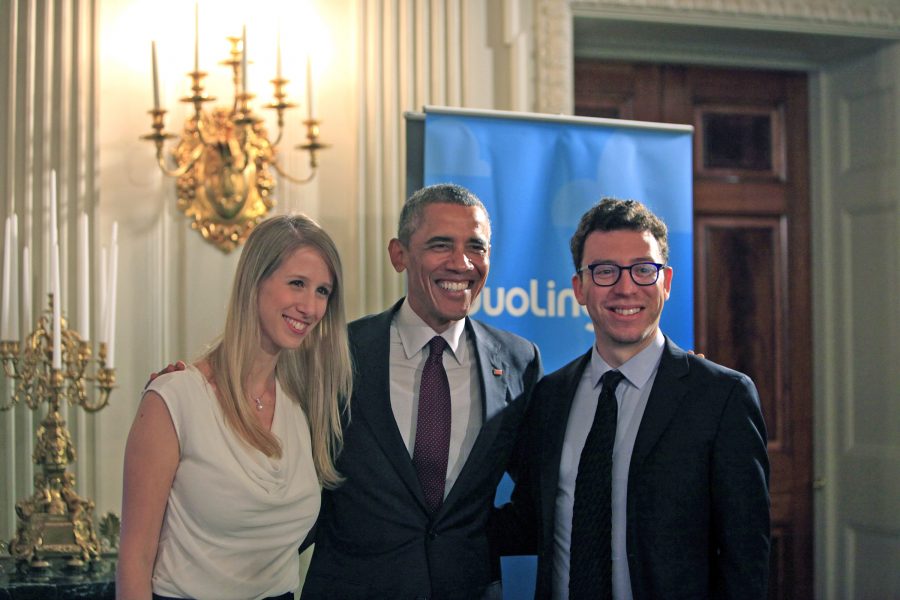Swoodle, founded in 2012 by CEO Paul Brown and CTO Andy Bell of DisplayNote Technologies is a real-time collaboration tool that allows users to collaborate and work together on documents, presentations and images, according to the Swoodle website.
“They saw a gap in the market for educational software and created something that truly let people engage within a group,” said Kris Nixon, a content crafter at the Swoodle’s Belfast office.
Swoodle can be used to collaborate on projects by letting students work simultaneously on a document with added help from chat, video call and voice call functions. One user can scroll through a document making edits and adding annotations while other users linked to that project can follow along. If the first user unlocks the document, each participant can make changes independently.
“The game of [designing Swoodle] was to bring together the best bits of everything we use,” Nixon said. “ You’ve got Google Docs. You’ve got Slack. You’ve got Skype. You’ve got What’s App, but [Swoodle] is one solution.”
The team at Swoodle has found through testing that Swoodle sessions works seamlessly even with 40 participants. Due to limited screen space on iOS devices, video calls are limited to four participants at a time.
“We should have a desktop version up by October, which for us is a real game changer,” Nixon said.
Swoodle has been taken to trade shows like SXSW and Dublin’s Web Summit, where 1800 beta users signed up for the app’s services over the course of one weekend. When asked why Swoodle is so popular, Nixon said Swoodle is communication the way it needs to be done.
“Nothing’s ever going to substitute four people getting in a room, getting their heads down and working on a project,” he said. “But when it comes to the convenience aspect of it, [Swoodle] can’t be underestimated.”
Swoodle is not the only app on the market affecting change in communication. Duolingo, a free science-based language education platform for iPhone, Android and Desktop, has enjoyed popularity and success with over 100 million users.
Duolingo was cofounded in 2011 by Luis von Ahn, also the creator of reCAPTCHA. With the help of his co-founder, Severin Hacker, Ahn decided to create a free education platform that would offer language education to everyone. Hailing from Guatemala, a country where most of the population cannot afford quality education, Ahn wanted to make a difference in people’s lives in terms of salary potential, said Gina Gotthilf, vice president of communications.
“Those who really need a language to improve their lives can’t afford it, so they decided they wanted to develop a way of teaching languages for free,” Gotthilf said. “But not only free, we also wanted to create the best way to learn languages and to make that accessible to everyone.”
Duolingo has its basis firmly rooted in science. Thirty-four hours of Duolingo is equivalent to a full university semester of language education, according to an independent study conducted by The City University of New York.
Gotthilf said Duolingo is successful because it is completely free and entertaining. For students, an app that is free and makes learning feel less like a chore and more like an interactive game is a win-win situation.
“It’s free, it actually works, it’s fun and it can be used for five minutes at a time,” Gotthilf said. “College students already have a lot of traditional studying to do, so being able to work on their skills in between classes is very useful.”
Duolingo is currently working to tailor the platform to each individual user for the optimal tutor experience and has recently created a proctored language test that can be taken from home in 20 minutes for a tenth of the price of normal language exams, Gotthilf said.
Students using Swoodle and Duolingo can establish an upper hand in the collegiate learning environment by communicating more effectively and even doing so in a foreign language.









